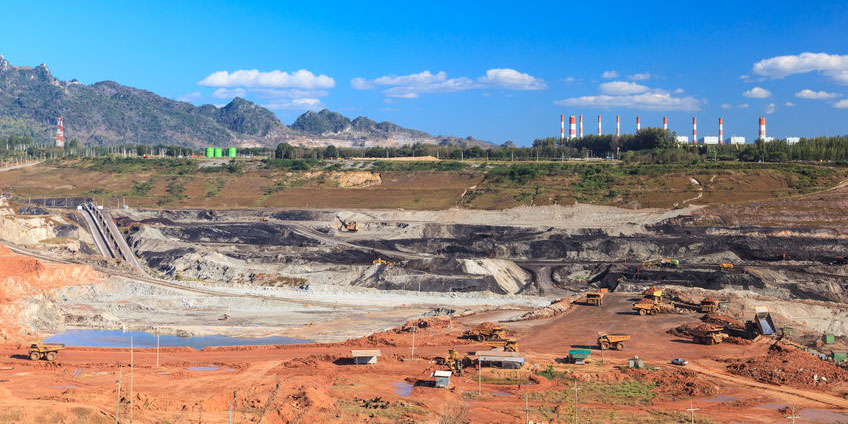Mining presents many challenges when it comes to water management. Many mining processes require large quantities of water, and mining waste is a potential pollutant.
Sustainable wastewater technologies minimize mining’s environmental footprint
Mining for some minerals, including coal, has been diminishing globally due to increased financial, social, and environmental pressures, but mining for lithium and other metals — used in electronics and in energy storage — is poised for a transformational decade as investment pours into the renewable-energy future. Uranium mining also seems poised for a resurgence in the United States.
In Silver, Nevada, a lithium mining company signed an agreement in 2017 to provide lithium for Tesla batteries, and drilling began that year. New moves in the U.S. to open the West to uranium mining are also likely to produce a boom to reduce reliance on foreign uranium. But, water and energy challenges for mining, both in the U.S. and globally, will require innovative solutions to protect water resources and use electricity more efficiently.
Water Challenges for Mining
Water is critical for all types of mining. In some locations, significant rainfall can lead to acid runoff from mine drainage, tailings piles, and surface mines, polluting streams and rivers. In drier locations, the mining and processing of ores can deliver a one-two punch to local water supplies, both using up groundwater and toxifying aquifers.
In general, mining wastewater may be highly acidic and high in suspended solids. It’s common to find contamination with organic compounds, metals, heavy metals, and metalloids like arsenic, iron, and manganese. In some mining, especially for coal, wastewater can be unacceptably saline and require desalination.
Because mining wastewater can be highly variable, so are treatment strategies, which generally include several different stages and technologies.
Any effluent generated at a U.S. mine requires a National Pollutant Discharge Elimination System (NPDES) permit that covers water and wastewater treatment scenarios including:
- Domestic wastewater treatment for temporary or permanent worker encampments
- Surface water runoff treatment
- Treatment of toxic wastewater generated during coal and ore processing
- Wastewater treatment for reuse in landscaping or dust control on roads
- Wastewater treatment for release to surface water or injection into groundwater
- Remediation and mitigation of wastewater when closing a mine
Wastewater Treatment for Reuse
Not only are many productive mines around the world located in areas with stressed water supplies, but also, mining activity has contributed to the degradation of what little fresh water is available. In order to prevent further environmental contamination, mining companies can turn to advanced wastewater treatment solutions that produce water suitable for reuse.
Smart Packaged Aspiral™, EcoBox™, and NIROBOX™ systems from Fluence can protect local freshwater sources by treating and reusing mining wastewater for landscaping, irrigation, dust control, and even drinking water. This reduces wastewater-disposal expenses and protects local water sources while meeting the most stringent standards, including California’s Title 22 and China’s Class 1A.
Decentralized Water Treatment
Connecting a remote mine to a central treatment plant via pipeline is expensive, time-consuming, and requires negotiation of complex right-of-way issues, so mining operations typically require decentralized treatment of water and wastewater. Decentralization, in a nutshell, means siting treatment near the water source, demand, or ideally both.
Benefits for mines include:
- Lower capital costs
- Energy savings
- Lower carbon dioxide emissions
- Faster startup with containerized treatment
- Less maintenance
Fluence’s Smart Packaged plants can provide a mining company with reliable treatment system that is customized for specific types and concentrations of pollutants and varying degrees of salinity. Because the treatment equipment is built into shipping containers, little site preparation or construction is necessary, and delivery and installation are streamlined. Startup costs are low and operation and maintenance are simple with a smartphone app and Fluence support.
Energy-Efficient Wastewater Treatment
Conventional biological activated sludge treatment requires air compression, the process that by far uses the most electricity during treatment. Fluence’s innovative membrane aerated biofilm reactor (MABR), however, delivers a 90% aeration energy savings with passive aeration at atmospheric pressure, making domestic wastewater treatment at mining camps more sustainable. And, the process has exceptional nutrient removal due to simultaneous nitrification-denitrification.
Contact the experts at Fluence for more information about sustainable wastewater treatment solutions for mining.

